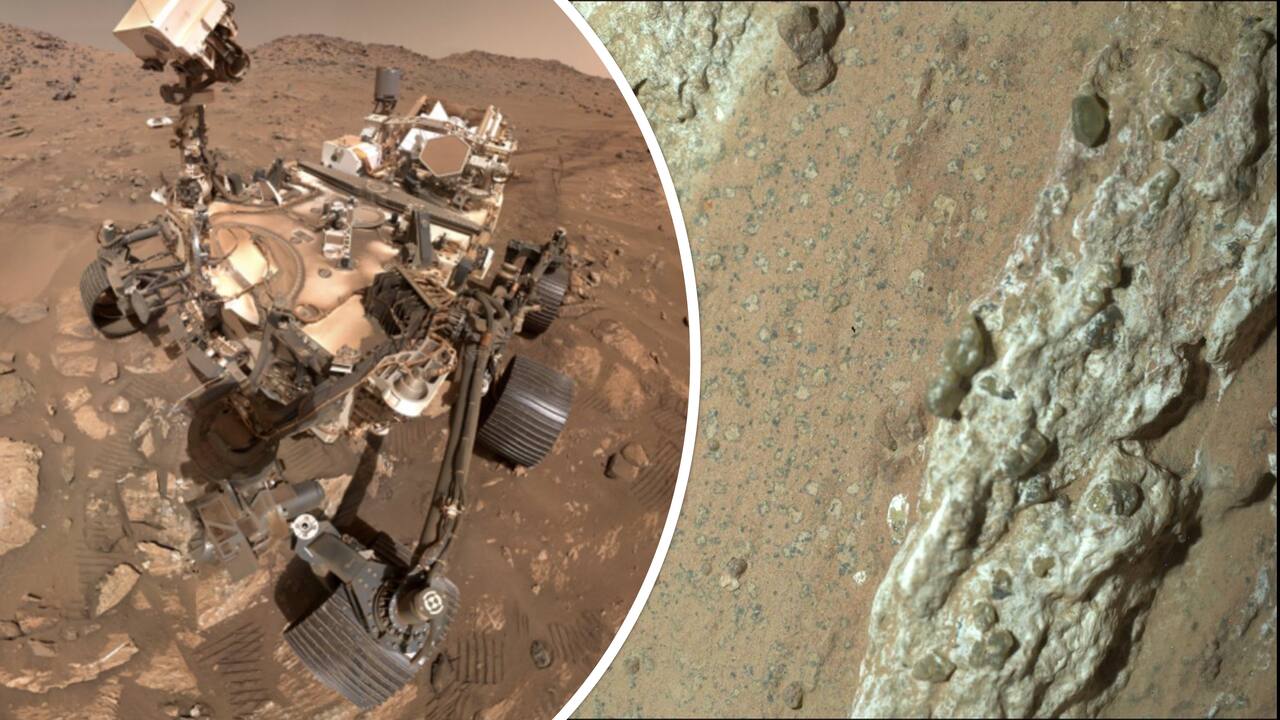Exciting news from the Red Planet! NASA just dropped a bombshell announcement that has scientists and space enthusiasts buzzing with anticipation. After a year of rigorous peer review, the Perseverance rover has discovered what officials are calling the “clearest sign yet” of potential ancient life on Mars. The findings, published in the journal Nature, center on a rock sample loaded with minerals and textures that, here on Earth, would strongly hint at past microbial activity. But before we break out the “We Come in Peace” banners, researchers are quick to caution that this isn’t definitive proof, yet. It’s a massive step forward in a cosmic mystery that’s been decades in the making.
Let’s rewind to July 2024, when Perseverance stumbled upon this compelling rock, nicknamed Cheyava Falls, in Mars’s Jezero Crater. This wasn’t just any rock; it was an arrowhead-shaped mudstone sitting in an ancient riverbed, and it was covered in bizarre dark speckles and larger, leopard-like spots. Fast-forward to September 2025: after intense analysis, scientists confirmed that those markings contain a fascinating mix of minerals, including vivianite (iron phosphate) and greigite (iron sulfide), that are often tied to biological processes on Earth.
The rock also contained organic carbon, sulfur, and phosphorus, essentially a buffet of compounds that could have fueled ancient microbial metabolisms. As acting NASA Administrator Sean Duffy put it, this discovery brings us closer than ever to answering whether life ever existed on Mars.
You Might Like: Bill Ackman Net Worth: Inside His $9.4B Fortune in 2025
What Makes This Discovery So Special?
After a year of scientific scrutiny, a rock sample collected by the Perseverance rover has been confirmed to contain a potential biosignature. The sample is the best candidate so far to provide evidence of ancient microbial life on Mars. https://t.co/0BAO1dhMG8 pic.twitter.com/JsOXgrNDmY
— NASA Mars (@NASAMars) September 10, 2025
Alright, let’s geek out on the details! The leopard spots and “poppy seeds” on Cheyava Falls aren’t just random patterns. They’re reaction fronts, chemical hotspots where energy-rich reactions likely occurred. On Earth, minerals like vivianite often form around decaying organic matter, and greigite can be produced by certain bacteria in low-oxygen environments. The way these minerals are arranged in the rock, with vivianite forming dark rings around greigite centers, mirrors patterns seen in Earthly sediments where microbes are munching on organic material and “breathing” rust and sulfate. It’s like a microbial signature etched in stone.
But here’s the kicker: while non-biological processes could theoretically produce these minerals, they usually require extreme conditions like high heat or acidic environments. The Perseverance team found no evidence that Cheyava Falls was exposed to those extremes. That leaves the door wide open for a biological explanation. As Joel Hurowitz, the lead author of the study, noted, this is the most compelling potential biosignature ever found on Mars. Still, scientists are wisely cautious. Katie Stack Morgan, Perseverance’s project scientist, emphasized that “astrobiological claims require extraordinary evidence,” and we’re not quite there yet.
What’s Next in the Hunt for Martian Life?
🚨BREAKING: NASA Found Signs Of Life On Mars
NASA just revealed that they have found life on Mars!#ufotwitter #uapX #NASA
Source, watch it live!https://t.co/DxsB1kgece pic.twitter.com/fZfyEntQ7L— Skywatch Signal (@UAPWatchers) September 10, 2025
So, where do we go from here? The Sapphire Canyon sample, drilled from Cheyava Falls, is safely stored in one of Perseverance’s tubes, waiting for a ride back to Earth. The problem? NASA’s Mars Sample Return mission, which aims to fetch these tubes, is currently on shaky ground due to proposed budget cuts. Without returning the sample to Earth, where scientists can run advanced lab tests, we might never know for sure whether these minerals are truly evidence of life. Isotope analysis, high-resolution microscopy, and other delicate experiments could provide the “extraordinary evidence” needed to confirm if Martian microbes once thrived in Jezero’s ancient waters.
Also See: Tyler Robinson Father’s Reward Money Is Potentially $1.15M
Despite the uncertainty, this discovery has already reshaped our understanding of Mars. It suggests that the planet may have been habitable for longer than previously thought, and that its ancient environments were capable of supporting life as we know it. For now, Perseverance continues its journey across Mars, collecting more samples and unraveling the planet’s secrets. As Nicola Fox, NASA’s associate administrator, aptly said, this isn’t the final answer, but it’s a thrilling chapter in humanity’s quest to find our place in the cosmos. The Red Planet might just have a few more surprises up its sleeve.








